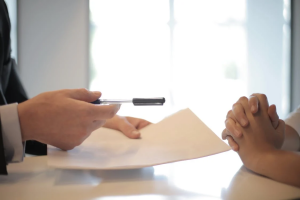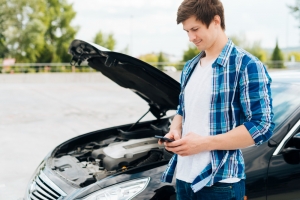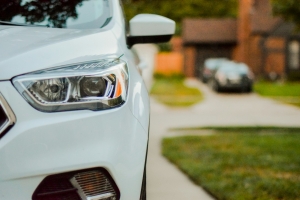Although it may appear like a common driving technique, turning left carries many serious concerns. In addition to checking for bicycles and pedestrians, drivers must estimate the speed and distance of oncoming vehicles when making these maneuvers. A minor error in judgment or a brief moment of distraction can result in a potentially catastrophic collision.
Left turns are common causes of accidents that often result in serious losses. Drivers can lower their risk of accidents and make better judgments by knowing the causes, consequences, and preventative strategies of left turn collisions.
Common Causes of Left Turn Collisions
- Failure to Yield Right of Way
Drivers who fail to yield to oncoming traffic are frequently involved in left turn accidents. Drivers must ensure adequate time to turn safely, even when the light is green. Collisions frequently result from misjudging the distance between vehicles or expecting another driver will slow down.
- Obstructed Views and Blind Spots
A driver's view may be obscured by big vehicles, parked cars, or structures close to crossroads. A driver runs the risk of colliding with an oncoming vehicle, a cyclist, or a pedestrian if they turn without making sure the road is clear.
- Misjudging Speed and Distance
Sometimes, drivers think they have enough time to make a turn before a car approaches them at the intersection. However, a crash could result from a severe mistake caused by misjudging distance and speed.
- Distracted Driving
A motorist may become distracted by talking to passengers, adjusting the music, or looking at a phone. Because left-turn turns necessitate full focus on oncoming vehicles and pedestrians, even a slight interruption might result in an accident.
- Bad Weather
It can be difficult to judge stopping times and distances when it's raining, foggy, or snowing. Additionally, slippery roads make it more likely that you may lose control when turning.
- Speeding by Oncoming Traffic
The turning driver's reaction time is slowed down by oncoming cars moving too fast. A driver may turn too quickly and cause an accident if they anticipate a slower car but come across one that is fast.
Consequences of Left Turn Collisions
- Injuries to Drivers and Passengers
Serious injuries can often be caused by left turn collisions, particularly when high speeds are involved. Concussions, whiplash, fractures, and spinal injuries are common injuries that can affect victims for a long time.
- Threat to Cyclists and Pedestrians
Drivers who neglect to check crosswalks before turning put cyclists and pedestrians crossing the street at serious risk. A driver may fail to see someone crossing the street if they are just paying attention to approaching traffic.
- Vehicle Damage and Expenses
Vehicles involved in side-impact collisions may sustain serious damage that necessitates expensive repairs or total loss claims. Following an at-fault accident, insurance rates may also rise.
- Legal and Insurance Concerns
The driver who made the left turn is usually considered at fault, leading to liability claims, legal action, and higher insurance costs. In the event of injuries, the at-fault driver can be liable for lost wages and medical costs.
How to Prevent Left Turn Collisions
- Adhere to Right-of-Way Rules
Unless you have a green arrow, always yield to approaching traffic. When in doubt, wait instead of making a quick turn.
- Look for Any Blind Spots
Look for cyclists, pedestrians, and other cars that might be out of sight by checking your mirrors before turning.
- Use Turn Signals Early
Allowing other vehicles and pedestrians to anticipate your turn can lower the likelihood of sudden pauses or miscommunication.
- Wait for a Clear Gap
You should never expect other drivers to slow down for you. Waiting until there is a safe and clear entrance is safer if you are unsure.
- Consider Alternative Routes
Use intersections with designated left-turn signals whenever you can. They offer a safer method of making your turn without having to worry about oncoming traffic.
- Stay Alert and Steer Clear of Distractions
Left turns require full concentration. When turning, avoid using your phone, adjusting your GPS, or getting distracted.
Conclusion
Left turn collisions are common yet preventable. Drivers can lower risk by being aware of major contributing factors, such as distractions and failure to yield. Roads can be made safer by using turn signals, being attentive, and adhering to traffic laws. Serious accidents can be avoided when turning with patience and caution.






